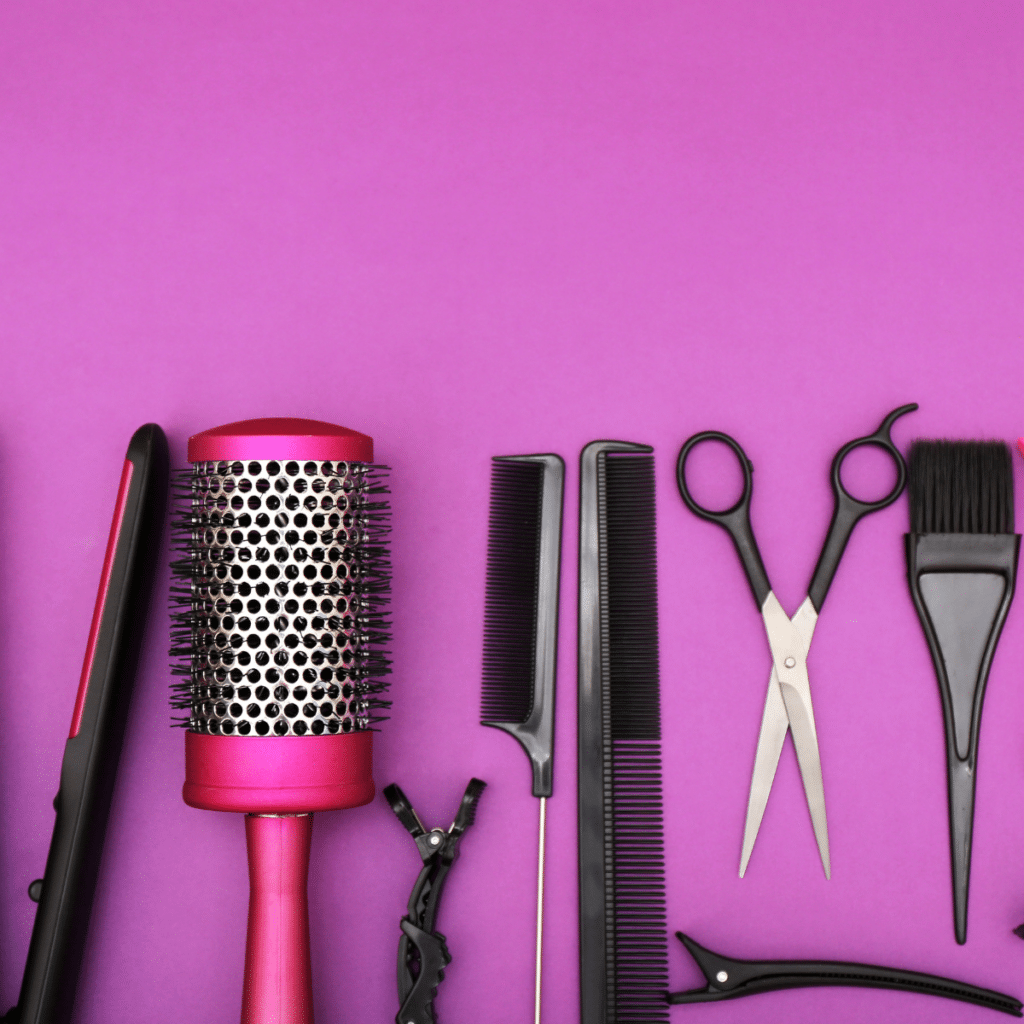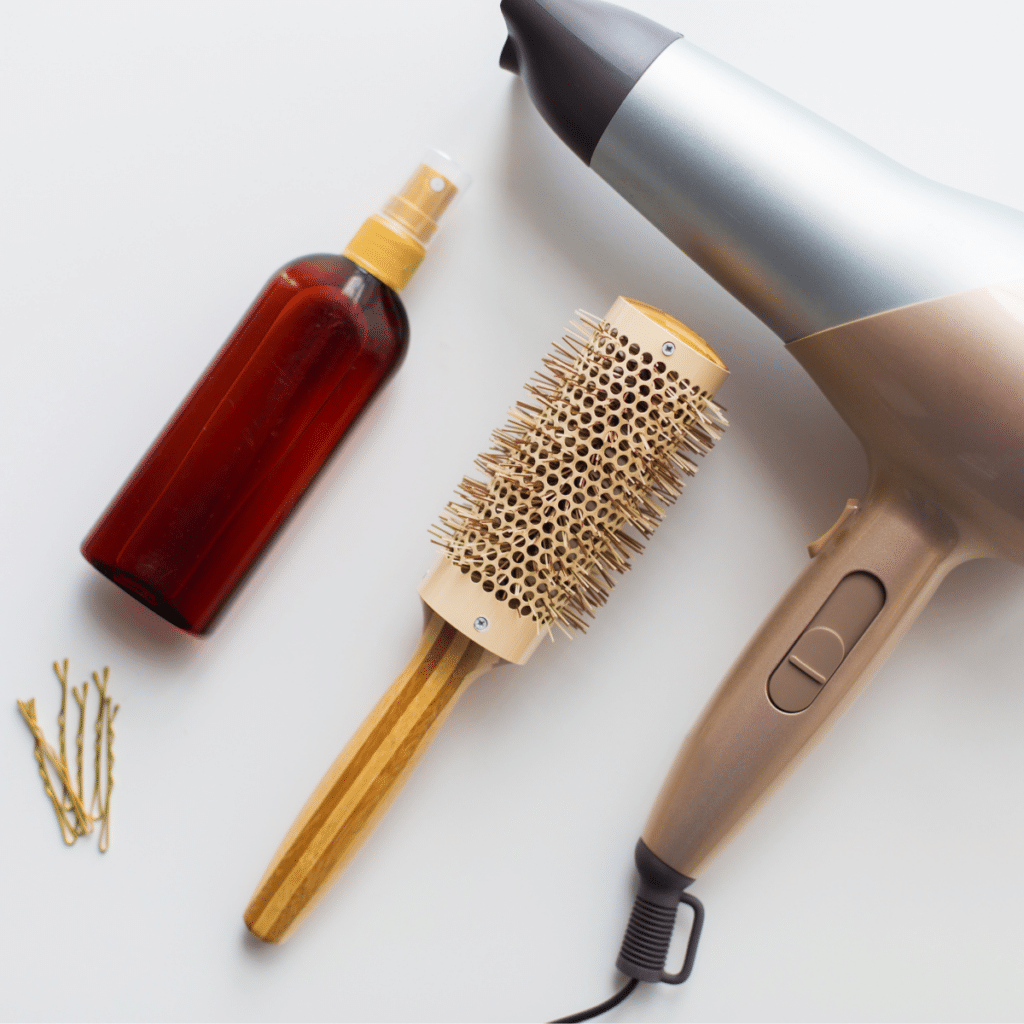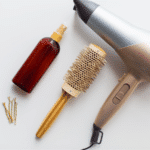You’ll find hot hair styling tools in every girl’s dressing room. These tools are the easiest way to get salon-like hair without actually going to a salon. But heat styling can damage your hair in many different ways.
Heat styling is a lifesaver for getting those gorgeous curls, sleek blowouts, and envious volume. But your curling iron or blow dry brush can also leave your hair damaged and looking lifeless if you’re not careful. You need the right ingredients and knowledge to style your hair without compromising its health. Here’s a guide with haircare hacks and tips to rock heat styling without sacrificing healthy, happy hair.

How Heat Can Damage Your Hair
Your hair is made of 95% keratin, a protein that gives it strength and structure. When exposed to excessive heat, the keratin bonds weaken, leading to a breakdown in the hair shaft. This can cause visible signs of damage like split ends, frizz, and a loss of elasticity and make your hair feel brittle and prone to breakage.
That’s why finding the exact temperature is essential – enough heat to get the style you want without punching your hair past its tipping point. Different hair types have different heat tolerance levels. Fine hair has more risk of damage, so a lower temperature can be used to style this type of hair, while thick or coarse hair can handle higher settings.
Preparing Your Hair for Heat Styling
Before you start styling your hair for a special occasion, there are crucial steps to prepare your hair for the heat. Here’s how you can prepare your hair:

Step 1: Wash Your Hair Properly
Start with clean, detangled hair. Avoid harsh shampoos that strip away natural oils, and choose a gentle, moisturizing formula. This helps your hair get the protein it needs to prepare for the heat and protect itself from tears or splits. Use deep conditioning once a week to add extra hydration, especially if you have dry or damaged hair.
Step 2: Drying After Wash
Resist the urge to aggressively towel-dry your hair. Rubbing it with a towel can damage the hair cuticle, the outermost layer that protects the inner strands. Instead, gently squeeze out excess water with a microfiber towel or an old cotton T-shirt.

Step 3: Apply Heat Protectant
This step cannot be skipped at any cost. A good heat protectant spray or cream acts as a barrier between your hair and the scorching heat of your styling tool. Apply the product throughout your hair, focusing on the ends which are more sensitive to damage. Look for a product that offers heat protection up to the temperature you plan to use on your styling tool.
Styling Tool Techniques to Use for Minimizing Damage
Now that your hair is prepared and protected, here are some tips for using your styling tools safely:
1. Section Control
You cannot tackle your entire head of hair all at once. Divide your hair into manageable sections. This allows for more even heat distribution and prevents you from accidentally overheating any one area.
2. Do It Faster
Time is of the essence when it comes to heat styling. The longer you hold the hot tool on your hair, the greater the risk of damage. Work quickly and efficiently, section by section, to minimize heat exposure.
3. Don’t Overdo It
Avoid overdoing multiple passes with the hot tool. If you don’t get the style you wanted on the first try, let your hair cool down entirely before attempting another pass.
4. Cooling Down
Once you’re done styling, let your hair cool down completely before brushing or combing it. Hot hair is more fragile and prone to breakage.

Heat Styling Hacks for Different Hair Styles
Every head of hair is unique, so it makes sense that the best heat styling approach will vary depending on your hair type. Here are some additional tips for specific hair concerns:
Fine Hair
Fine hair can quickly become limp and lifeless with heat styling. To add volume, try flipping your head upside down while blow drying and using a round brush to lift the roots. Choose smaller barrel sizes on curling irons or wands for tighter curls that will hold better. Set the temperature between 250 degrees Fahrenheit to 300 degrees Fahrenheit.
Thick Hair
Thick hair can take longer to style and hold a curl. Use a higher heat setting if your hair can handle it, but be mindful not to overheat. Try to stay within 350 degrees Fahrenheit to 400 degrees Fahrenheit. Use larger barrel sizes on curling irons or wands for looser, more relaxed waves.

Curly Hair
Curly hair can be prone to frizz with heat styling. Use a diffuser attachment on your blow dryer to help maintain your curl pattern and minimize frizz. Apply a leave-in conditioner or curl cream before heat styling to add definition and prevent dryness. On the other hand, you can leave your hair as it is or use styling products to enhance the definition of the natural curls.
Heat Styling Doesn’t Have to Be Damaging
Heat styling can be a fun and creative way to express yourself. This guide will help you heat style your hair without sacrificing its health. However, go with your natural hair texture whenever possible, and when you do heat style, do it with knowledge and proper care. With the right approach, you can enjoy healthy hair and heat styling at the same time.


